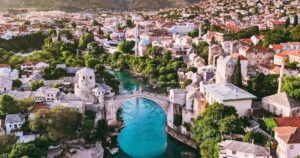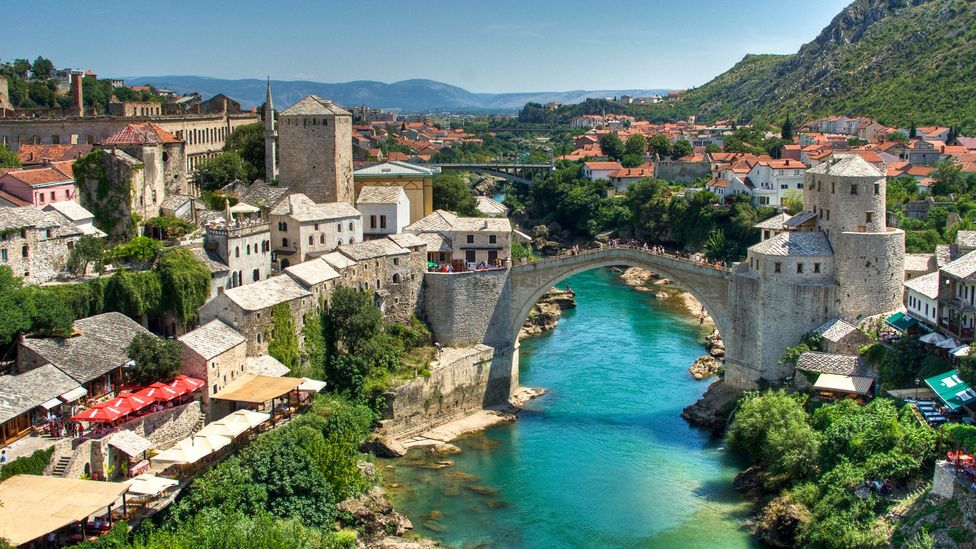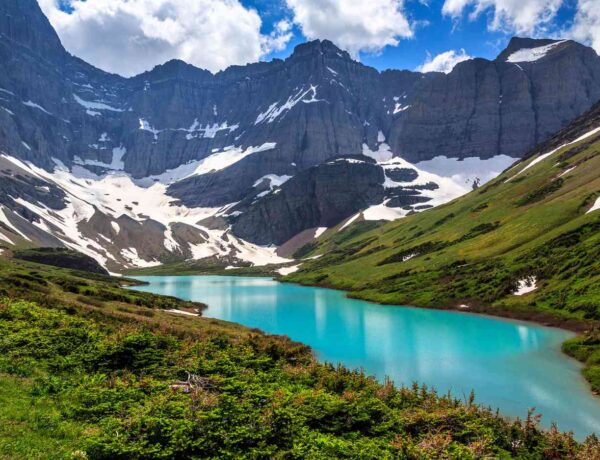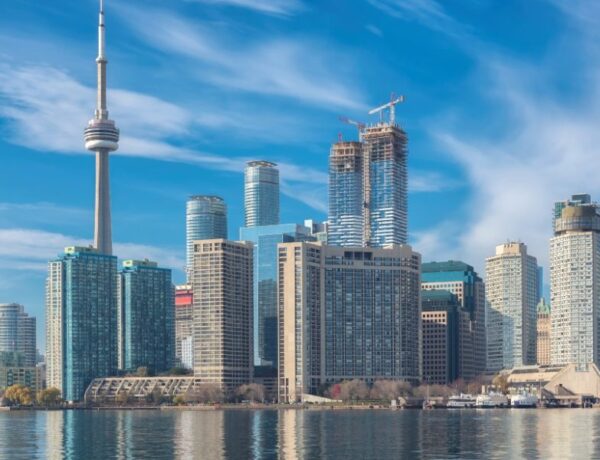When people ask me for my favorite travel destination, I think the answer often surprises them. It’s not sensuous Italy, or industrious London (although I love them both). My favorite place, hands down, is Bosnia & Herzegovina: that overlooked heart shaped country buried in Southeast Europe.
As their tourist brochures claim, Bosnia really does look like a heart. Not a hokey Hallmark one, but a real beating human heart. This is so fitting to me, because after being burnished by years of strife and genocide, what remains in this forgotten country is the lively beating heart of beautiful culture and optimistic people.
Sarajevo- Elegance under strife

The first thing I noticed about Bosnia, as my plane circled the infamous Butmir airport, was how brilliantly green it was. The capital city of Sarajevo is nestled into endless rolling green hills, speckled with orange roofed houses. Many of these hills were once hiding places for Serbian snipers, and some are still unreachable due to landmines. In the distance snow-capped peaks (many of them popular for winter skiing) loom ghostlike.
Sarajevo may have fallen off the map in recent years, but it once played a key role in European history. It was here, on the Latin Bridge over the Miljacka River, that the Archduke Franz Ferdinand was assassinated in 1914, sparking World War One.
Sarajevo itself is an elegant and cosmopolitan city. Art Nouveau architecture mixes with medieval ottoman flair to create an eclectic style. There is a bustling Turkish market, delicate French bakeries and the gelato- my goodness. Mosques dominate the city skyline and the Muslim call to prayer echoes through the city five times a day to remind you that Bosnia is one of Europe’s few Muslim countries. Although religious practice is declining, mosques are being built at an increasing pace as symbols of national pride.

Most jarring of all, among the jewel-like mosques and the shady patios are the tombstones. Waves of identical white stones cover the hillsides, their dates all ending in 199-. Along with the remaining burned out buildings and bullet-pocked pavement, they act as a painful reminder of what the city has struggled through.
Mostar – A City Rebuilt

Further south, in the Herzegovina region, the continuously rolling hills turn arid and rocky. Though still beautiful, the landscape here is tougher and grittier. The main city of the south, Mostar, sits like a glimmering jewel along the Neretva river.
Built in the 16th century, the old town of Mostar is a smoothly worn UNESCO World Heritage Site. It is truly one of the most beautiful old towns I have ever seen- slick and white with the icy green Neretva winding it’s way past. Tiny cafes line the river, serving up tasty Mostarski beer and local meat dishes. And its center sits the breathtaking arch of the Old Bridge.
Mostar was on the front lines of the mid-90’s troubles, and most of the city was completely devastated. Even now the downtown is full of condemned and abandoned buildings, their windows blown out like black eyes. Even the stunning Old Bridge was blown to smithereens during what many consider to be the low point of the war.
Although there isn’t enough money to clear away all the rubble, the Old Bridge has been lovingly rebuilt. It stands now, glorious as ever, a monument to the new age of peace and friendship.
Open Arms
That’s the amazing thing about Bosnia. After all that they’ve been through, and all the constant reminders of the not- so distant past that they live with every day, the people are amazingly resilient. Instead of dwelling on what they’ve lost, there is an incredible focus on rebuilding. Everywhere I went people wanted to talk, wanted to buy me dinner, wanted to make sure I made it to the train station all right. Everywhere there was a genuine welcoming attitude towards tourists as the country strives to be known for more than just bloody war.
Visiting Bosnia can be moving, but the country is completely safe now. The wars that plagued the 90’s are just a distant nightmare, there is no residual violence. Landmines are still a threat in rural areas but if you stick to the main paths you have nothing to worry about.
Although this history can be stunningly dark at times, it and the warm welcoming people it’s shaped have made Bosnia an unforgettable travel experience.





No Comments